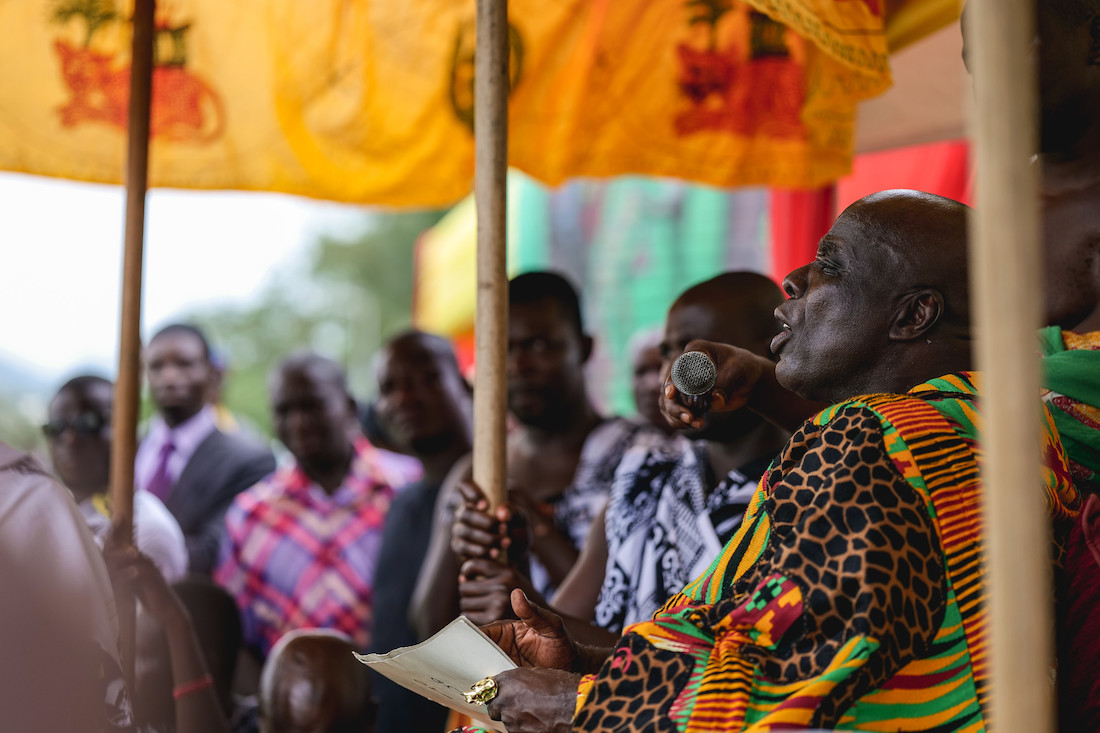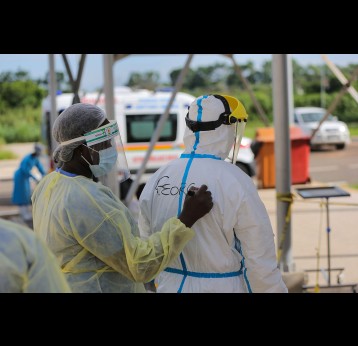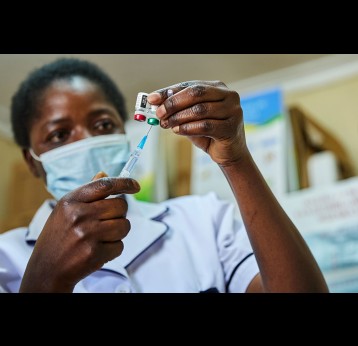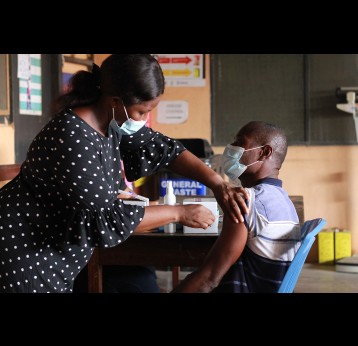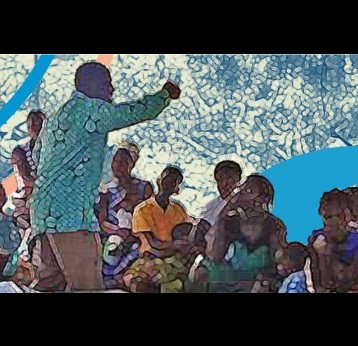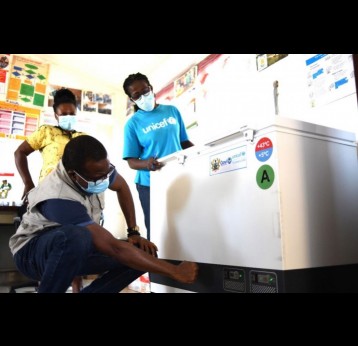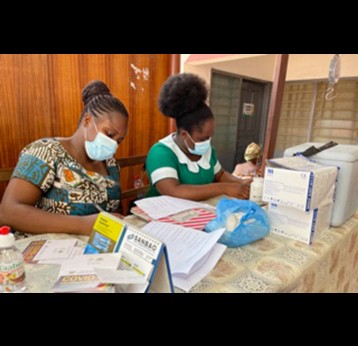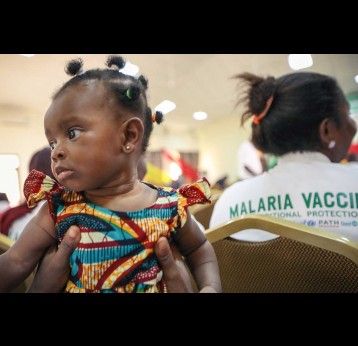Country Information
DTP3 / immunisation coverage
Grade of ConfidenceCommitments: Multi-year programme budgets endorsed in principle by the Gavi Board. These become financial commitments upon approval each year for the following calendar year.
Approvals: Total Approved for funding
Disclaimer: the boundaries and names shown and the designations used on this map do not imply the expression of any opinion whatsoever on the part of Gavi, the Vaccine Alliance concerning the legal status of any country, territory, city or area or of its authorities, or concerning the delimitation of its frontiers or boundaries. Dotted lines on maps represent approximate border lines for which there may not yet be full agreement.
This Gavi country data is made available under the Creative Commons BY 4.0 license: https://creativecommons.org/licenses/by/4.0/
Latest News
All News11 February 2022
COVID-19 through the lens of a Ghanaian photographer
While the pandemic forced everyone else indoors, a Ghanaian photographer took to the streets to document Accra on lockdown.
16 December 2021
“At last”: Ghanaian football star Michael Essien hails world’s first malaria vaccine
Years before Michael Essien began his extraordinary Premier League football career, he was a barefoot kid in small-town Ghana, scoring between goalposts made of stacked rocks. Like millions of other children in the world’s endemic zones, young…
2 December 2021
Gavi Board approves funding to support malaria vaccine roll-out in sub-Saharan Africa
A new malaria vaccination programme will support Gavi-eligible countries to implement a new tool in the fight against malaria in sub-Saharan Africa in 2022-2025, including vaccine introduction, procurement and delivery
2 December 2021
A Ghanaian doctor’s perspective on COVID-19 vaccine inequity
Pre-COVID-19, Ghana’s health system was overburdened. The virus has made everything harder, and vaccine inequity has made it harder still.
10 November 2021
Discoveries from vaccine implementation
In episode 8 of the Global Health Matters podcast, we spoke to Professor Margaret Gyapong of the University of Health and Allied Sciences in Ghana and Dr Lee Hampton of Gavi, the Vaccine Alliance. These experts shared their views on how…
20 October 2021
In Ghana, a strong cold chain makes all the difference
UNICEF and Gavi partnered to fund, procure and deliver more than 2,300 items of cold chain equipment to ensure health centres met immunization targets.
19 October 2021
Bringing routine immunisation back into focus in Ghana
Community health nurses in Ghana are on a mission to reverse the decline in routine immunisation since the start of the COVID-19 pandemic.
26 August 2021
A new study suggests the RTS,S malaria vaccine alone is as effective as preventive antimalarials; together they could save thousands of lives.
9 July 2021
Why Africa’s push to make vaccines should look further than COVID-19
Vaccine manufacturing doesn't come cheap. It depends heavily on support from developed countries. It also takes much more than relaxing intellectual property rights and a desire for vaccine equity.
Subscribe to our newsletter
Sources
| Name | Source | Date |
|---|---|---|
| Total population by country, by year, by age | United Nations, United Nations, Department of Economic and Social Affairs, Population Division. World Population Prospects. | 2019-07-31 |
| Total number of children surviving until 1 year old by country and by year | United Nations, United Nations, Department of Economic and Social Affairs, Population Division. World Population Prospects. | 2019-07-31 |
| UN Life births per gender | United Nations, United Nations, Department of Economic and Social Affairs, Population Division. World Population Prospects. | 2019-07-31 |
| Under-five mortality rate by country and by year | UNICEF CME Info http://www.childmortality.org/, Level & Trends in Child Mortality. Estimates Developed by the UN Inter-agency Group for Child Mortality Estimation (UNICEF, WHO, World Bank, UN DESA, UNPD). | 2020-09-01 |
| Infant mortality rate by country and by year | United Nations, United Nations, Department of Economic and Social Affairs, Population Division. World Population Prospects. | 2020-09-01 |
| GNI per capita, Atlas method (current US$) | World Bank, The gross national income, converted to U.S. dollars using the World Bank Atlas method, divided by the midyear population | 2021-07-01 |
| Antigen Coverage (%) by country and by year | WHO/UNICEF, Coverage refers to the number of administered doses divided by the number of eligible children to receive that vaccine. | 2021-07-15 |
| Percentage of districts with >=80% DTP3 coverage | WHO, Joint Reporting Form (JRF) | 2021-07-15 |
| Percentage of districts with <50% DTP3 coverage | WHO, Joint Reporting Form (JRF) | 2021-07-15 |
| Total Disbursed - Finance Disbursement | GAVI, Access software for Finance (in USD) | 2019-09-17 |
Grade of Confidence (GoC): The WHO and UNICEF estimates of national immunisation coverage (wuenic) are based on data and information that are of varying, and, in some instances, unknown quality. Beginning with the 2011 revision WHO/UNICEF describe their grade of confidence (GoC) in these estimates. As there is no underlying probability model upon which the estimates are based, WHO/UNICEF are unable to present classical measures of uncertainty, e.g., confidence intervals. Moreover, WHO/UNICEF have chosen not to make subjective estimates of plausibility/certainty ranges around the coverage. The GoC reflects the degree of empirical support upon which the estimates are based. It is not a judgment of the quality of data reported by national authorities.
|
Explanation of GoC values: |
|
| *** |
Estimate is supported by reported data [R+], coverage recalculated with an independent denominator from the World Population Prospects from the UN Population Division (D+), and at least one supporting survey within 2 years [S+]. While well supported, the estimate still carries a risk of being wrong. |
| ** | Estimate is supported by at least one data source; [R+], [S+], or [D+]; and no data source, [R-], [D-], or [S-], challenges the estimate. |
| * | There are no directly supporting data; or data from at least one source; [R-], [D-], [S-]; challenge the estimate. |

